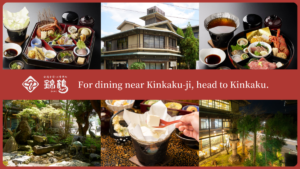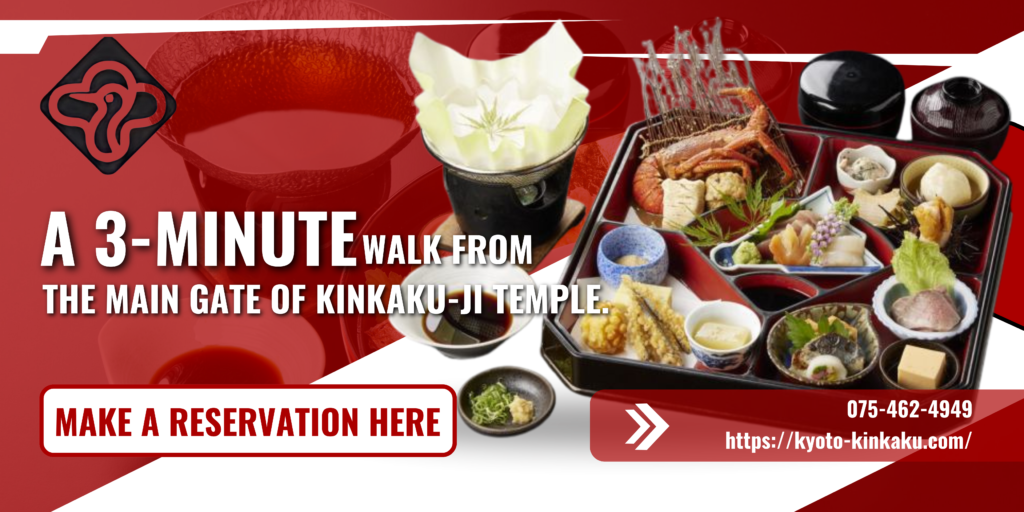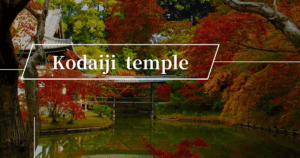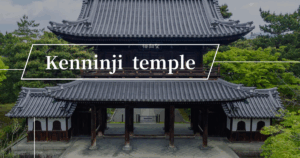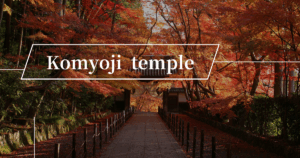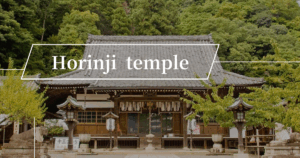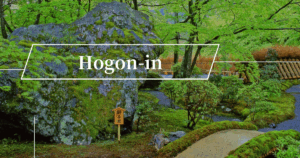Boasting a history of over 1,000 years, Toji Temple in Kyoto is a living cultural heritage that conveys the spirit of the Heian period to the present day.
Known as a temple associated with Kukai (Kobo Daishi), the sight of the five-story pagoda rising into the night sky has become an iconic sight in Kyoto.
Toji Temple, a World Heritage Site, invites visitors into a mysterious world with its magnificent architecture and hidden treasure trove of Buddhist art.
In this article, we will look at the history, highlights, and access to Toji Temple.
What kind of place is Toji Temple?
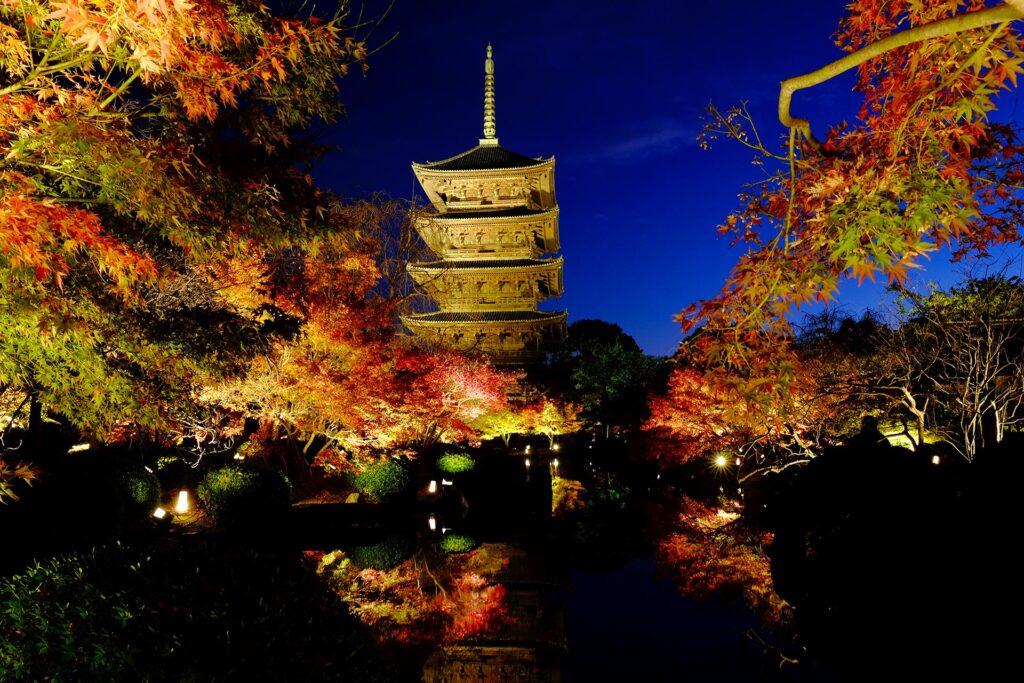
Toji Temple, whose official name is Kyoogokokuji Temple, is the head temple of the Shingon sect, founded by Kukai (Kobo Daishi) in 823 for the purpose of protecting Heian-kyo.
Located in Minami-ku, Kyoto City, it was located just east of Rajomon Gate in Heian-kyo, hence it came to be called “Toji Temple.”
The grounds are home to a National Treasure five-story pagoda (54.8m high), known as the tallest wooden structure in Japan.
There are many other important cultural properties in the temple, including the main hall, lecture hall, and dining hall. In particular, the lecture hall houses 21 Buddha statues (a three-dimensional mandala), which express the universe view of Esoteric Shingon Buddhism.
The Kobo Market (antique market), held on the 21st of every month, is bustling with visitors. In spring, the contrast between the cherry blossoms in the temple grounds and the five-story pagoda is beautiful, and in autumn, the temple grounds are decorated with colorful autumn leaves.
In 1994, it was registered as a World Heritage Site as one of the “Cultural Monuments of Ancient Kyoto,” and even today it is a temple representative of Kyoto, visited by many worshippers and tourists.
History of Toji Temple
Let’s start by looking at the history of Toji Temple.
Knowing the history before you go sightseeing will allow you to enjoy your trip even more.
Founding of Heian-kyo and To-ji Temple
When the capital was moved to Heian-kyo, Emperor Kanmu built two official temples, To-ji Temple and Sai-ji Temple, on the east and west sides of the capital.
Originally it was a government temple established to protect the nation, but in 823, Emperor Saga bestowed it upon Kukai (Kobo Daishi), the founder of Esoteric Shingon Buddhism.
Kukai developed Toji Temple into a base for the Shingon sect and established it as Japan’s first esoteric Buddhist training center.
From here, the teachings of Esoteric Shingon Buddhism spread throughout the country.
As its official name, “Kyoogokokuji Temple,” suggests, Toji Temple played an important role in protecting the country through Buddhism.
Toji Temple from the Middle Ages to the Early Modern Period
From the late Heian period through to the Kamakura period, Toji Temple suffered many fires but was rebuilt each time.
The reconstruction after the great fire in 1255 was particularly important, and many of the buildings that can be seen today, such as the five-story pagoda and main hall, were rebuilt during this period.
During the Muromachi period, it developed further under the patronage of Ashikaga Yoshimitsu.
After the turmoil of the Sengoku period, Toji’s land was significantly reduced when Toyotomi Hideyoshi remodeled Kyoto, but it was protected again during the Tokugawa shogunate and maintained its status as an important Shingon Buddhist temple throughout the Edo period.
Toji Temple from modern times to the present
Although Toji Temple was hit hard by the Shinbutsu Bunri Rei (law to separate Shinto and Buddhism) that was enacted after the Meiji Restoration, it was protected as a temple of national importance.
From the Taisho period through to the early Showa period, efforts were made to restore the buildings and preserve the cultural assets, and in 1994 it was registered as a World Heritage Site as part of the “Cultural Assets of Ancient Kyoto.”
Today, it continues to play a religious role as the head temple of the Shingon sect, and as a cultural heritage site housing a number of national treasures and important cultural properties, it is visited by many worshippers and tourists throughout the year.
Additionally, the Kobo Market, held on the 21st of every month, is a beloved Kyoto tradition and plays an important role as a center for disseminating local culture.
Highlights of Toji Temple
Toji Temple is home to numerous cultural assets dating back more than a thousand years of history.
This temple, which has continued to fascinate people from the Heian period to the present day, is home to numerous buildings and Buddhist statues that overwhelm visitors.
Here we will introduce three highlights that you should not miss.
Highlights of Toji Temple
- Five-story pagoda
- Auditorium and 3D Mandala
- Treasure Museum (inside the five-story pagoda area)
Five-story pagoda

Toji Temple’s five-story pagoda, which stands at 54.8m, is known as the tallest wooden structure still standing in Japan.
The current tower was rebuilt in 1644 by order of Tokugawa Iemitsu and is designated a national treasure.
During the day, it stands out beautifully against the blue sky, and at night, when lit up, it creates a fantastical atmosphere.
The interior of the pagoda is not open to the public, but you can enjoy the beautiful, well-balanced architecture from the outside.
It is a popular spot with many photography enthusiasts, especially during the cherry blossom and autumn foliage seasons, when you can enjoy the spectacular views of nature and architecture.
Auditorium and 3D Mandala

The Toji Temple lecture hall houses a “Three-Dimensional Mandala,” a group of 21 Buddhist statues that embody the teachings of esoteric Buddhism that Kukai brought back from Tang Dynasty China.
The arrangement of Dainichi Nyorai in the center surrounded by other Buddhas is a three-dimensional expression of the Shingon Esoteric Buddhism view of the universe.
It is considered a masterpiece of esoteric Buddhist art from the Heian period, and the entire complex has been designated a national treasure .
Normally it can only be viewed from the outside, but during special opening periods you can go inside and view it up close.
The intricate expressions and postures of the Buddhist statues give a sense of the advanced sculpting techniques of the time and Kukai’s profound philosophy.
Treasure Museum (inside the five-story pagoda area)
The Toji Treasure Museum houses approximately 300 temple treasures that have been carefully protected throughout the temple’s 1,200-year history.
The exhibition brings together the best of the art and history of Esoteric Shingon Buddhism, including precious Buddhist statues designated as national treasures and important cultural properties, mandalas, scriptures, ancient documents, and paintings.
Particularly worth seeing are the “Standing Statue of Kabutobata Bishamonten” attributed to Unkei and the “Five-pronged Vajra” that is said to have been brought back from Tang Dynasty China by Kukai .
The exhibits change with the seasons, so you’ll always find something new no matter how many times you visit.
This is a must-visit place for those wishing to gain a deeper understanding of Toji Temple’s history and cultural assets.
What is the best season to visit Toji Temple?
Toji Temple is a temple where you can enjoy its beauty in all four seasons, but spring and autumn are especially recommended seasons for sightseeing.
During the cherry blossom season from late March to early April, the cherry blossoms in the temple grounds are in full bloom, creating a spectacular sight in combination with the five-story pagoda.
In particular, at night, when the cherry blossoms are lit up, you can enjoy the cherry blossoms and the five-story pagoda in a fantastical atmosphere.
The autumn foliage season (mid- to late November) is also not to be missed.
The contrast between the autumn leaves in the temple grounds and the temple buildings is beautiful, and the contrast between the autumn leaves and the five-story pagoda illuminated by the light of dusk is particularly impressive .
Additionally, the Kobo Market (antique market), held on the 21st of every month, is also popular and draws many visitors.
The spring and autumn Kobo Markets are particularly good in good weather and can be enjoyed together with the scenery of the temple grounds, making them the perfect opportunity to experience all the charms of Toji Temple at once.
Access to Toji Temple
Located in the southern part of Kyoto, Toji Temple is easily accessible by public transport and from Kyoto Station, the base for sightseeing in Kyoto.
It is a convenient location for tourists as it can be reached by various means of transportation, including city buses, subways, and taxis.
Here we will introduce specific access methods from the main tourist spots, Kyoto Station and Kinkakuji Temple.
Access from Kyoto Station
There are several means of transportation to get to Toji Temple from Kyoto Station.
The easiest way is to take the city bus. Take the 208 bus from bus stop D2, which is a 3-minute walk west from Kyoto Station Hachijo Exit, and get off at the Toji bus stop . It is then a short walk away (approximately 10 minutes).
If you take a taxi, it takes about 5 minutes from Kyoto Station.
It’s relatively close, about 15 minutes (about 1km) on foot from Kyoto Station, so we recommend taking a stroll there on a nice day.
To get there, exit the Hachijo West Exit of Kyoto Station, head north on Aburanokoji-dori, then head west on Kujo-dori.
Access from Kinkakuji Temple
To get from Kinkakuji Temple to Toji Temple, you will need to take a city bus.
Take bus route 205 from the Kinkakuji-mae bus stop and get off at Shijo Karasuma or Shijo Kawaramachi.
From there, transfer to bus line 206 or 208 and get off at the Toji bus stop (approximately 50 minutes).
A more convenient way is to take the subway. Take city bus route 12 or 204 from Kinkakuji to Kitaoji Bus Terminal, then board the subway on the Karasuma Line .
Get off at Kyoto Station and take a city bus or walk to Toji Temple in about 40 minutes.
Traffic congestion is expected during peak tourist season, so a combined subway route will save you time.
Toji Temple admission fees and opening hours
Below is a table summarizing basic information about Toji Temple.
| item | Contents |
|---|---|
| location | 1 Kujo-cho, Minami-ku, Kyoto (Toji Temple) |
| Visiting hours | Free worship within the grounds (open 24 hours) |
| Visiting hours | Kondo and Kodo: 8:30-17:00 (varies depending on the season) |
| Admission fee | Free admission to the temple grounds Kondo and lecture hall: 500 yen for adults, 400 yen for middle and high school students, 200 yen for elementary school students *Additional fees apply during special public viewing periods |
| Treasure Museum | Opening hours: 9:00-17:00 (entry until 16:30) Admission fee: 800 yen for adults, 700 yen for junior and senior high school students, 300 yen for elementary school students |
| Inside the five-story pagoda | Private (special release only) |
| Kobo Market | 21st of every month, from early morning to evening |
| parking | Available (charged) |
| Estimated travel time | Temple grounds only: Approximately 30 minutes Including the Kondo, Kodo and Treasure Museum: Approximately 1 hour and 30 minutes |
Recommended spots around Toji Temple
When visiting Toji Temple, you will also find many fascinating temples and shrines dotted around the area, all of which are rich in history and culture.
By combining your visit with a visit to Toji Temple, you can fully experience Kyoto’s deep Buddhist culture and history.
Here we introduce three temples and Buddhist temples that are easily accessible from Toji Temple.
Rengeji Temple in front of Toji Temple
It is a small temple located about a 3-minute walk from the south gate of Toji Temple, but it is a famous cherry blossom spot known only to those in the know.
The statue of Kobo Daishi enshrined in the Goei-do Hall is a valuable piece that is said to have been carved by Kukai himself during his training in China, and is also famous as a secret Buddha that is only displayed to the public once a month.
The temple grounds are also home to a 400-year-old weeping cherry tree called “Kyoto Kokonoe Sakura,” which blooms beautifully in the spring.
It is a quiet spot a little away from the hustle and bustle of Toji Temple, where you can slowly experience history.
As a temple associated with Kobo Daishi, many people visit it together with their visit to Toji Temple, and you can enjoy a different, more intimate atmosphere than at Toji Temple.
Rajomon Gate Ruins and Hokoji Temple
About a 20-minute walk from Toji Temple are the ruins of Rajomon Gate, which was once the main gate of Heian-kyo, and Hokoji Temple, which was built by Toyotomi Hideyoshi.
Rajomon Gate flourished as the southern gateway to the capital during the Heian period, but today only a stone monument remains.
The neighboring Hokoji Temple is known for the incident involving the inscription on its bell, “Peace and prosperity for the nation, happiness for the emperor and his subjects,” which marked the beginning of the deterioration of relations with Tokugawa Ieyasu after Hideyoshi’s death .
The huge stone walls and foundation stones remain at the site of the Great Buddha Hall, allowing visitors to imagine the grandeur of the temple at that time.
The “Shichigosan stones” that supported the pillars of the Great Buddha Hall are particularly impressive, and give a sense of the high level of technology used during the Toyotomi period.
If you visit while thinking about its relationship with Toji Temple, you will be able to get a real feel for the depth of Kyoto’s history.
Nishi Honganji Temple
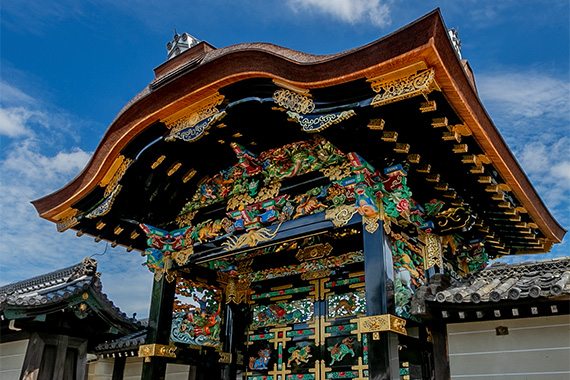
Nishi Honganji Temple, located about a 25-minute walk northwest from Toji Temple or a few minutes by city bus, is the head temple of the Jodo Shinshu Honganji sect.
Founded in 1591, it is registered as a World Heritage Site, along with Toji Temple, as one of the “Cultural Assets of Ancient Kyoto.”
In particular, the Hiunkaku and Shoin buildings have been designated national treasures as representative architecture of Momoyama culture, and the gorgeous sliding screen paintings and sculptures are also highlights.
There is also a large ginkgo tree on the grounds that is about 400 years old, and in autumn the yellow leaves are a spectacular sight.
It is interesting to note that while Toji Temple is the base of Esoteric Shingon Buddhism, Nishi Honganji Temple is the central temple of the Jodo Shinshu sect, which spread as a form of Buddhism among the common people. By visiting both temples, you can learn about and compare the diverse Buddhist culture of Kyoto.
Frequently asked questions about Toji Temple
summary
Toji Temple, a World Heritage Site representing Kyoto, is a sacred place of Esoteric Shingon Buddhism founded by Kukai in the early Heian period.
It has a history of over 1,000 years and is a treasure trove of valuable cultural assets, including the national treasure five-story pagoda and the lecture hall that houses a three-dimensional mandala.
There is no end to things to see, including the harmony of natural beauty throughout the seasons and historical architecture, the Kobo Market held on the 21st of every month, and the well-equipped treasure museum.
If you visit the surrounding temples and shrines, you will be able to experience Kyoto’s Buddhist culture on a deeper level.
Toji Temple is not just a tourist destination, but a living cultural heritage that embodies Japan’s history and spiritual culture, and continues to fascinate the hearts of many people even today.
If you visit Kyoto, be sure to stop by.
